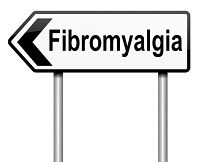Article
Brain Processing Differs in Fibromyalgia and Challenges Emotional State
Author(s):
Patients with fibromyalgia typically experience widespread chronic pain and a new study adds to the evidence that emotional impact is prominent as well.

Patients with fibromyalgia typically experience widespread chronic pain and a new study adds to the evidence that emotional impact is prominent as well.
Researchers from the University of Liverpool discovered that cortical processing in the brain — where images are examined – differs in those with fibromyalgia. Pain and non-pain-related cues can increase sensitivity which contribute to the altered emotional state many patients with fibromyalgia experience on a daily basis.
“Our study points toward the importance of cognitive-emotional therapeutic approaches for the treatment of [fibromyalgia],” the authors wrote in The Journal of Pain.
A total of 19 patients with fibromyalgia and 18 healthy controls were included in the research. The participants were shown pain and non-pain pictures in order to analyze spatiotemporal patterns of brain activations. Data was collected on short-latency (140 milliseconds), mid-latency (250 — 450 milliseconds) and late positive potential (LPP) (>500 milliseconds).
The patients with fibromyalgia displayed increased brain activations and response to both pain and non-pain pictures when compared to the healthy subjects. Greater pain and unpleasantness were associated with the photos in mid-latency and LPP components in those with fibromyalgia; however, the potential in short-latency was lower.
“Results suggest amplitude increases to mid- to long-latency cortical activations in patients with [fibromyalgia], which are known to reflect emotional control and motivational salience of stimuli,” the team confirmed.
Not only do the figures hint that patients with fibromyalgia exhibit greater sensitivity, but they also have less emotional regulation. Previous studies proved that mental health symptoms are linked to fibromyalgia severity and the condition hurts an individual’s quality of life.
“The findings suggest that innocuous, everyday somatic visual stimuli may challenge the emotional state of patients with fibromyalgia,” the authors concluded.





